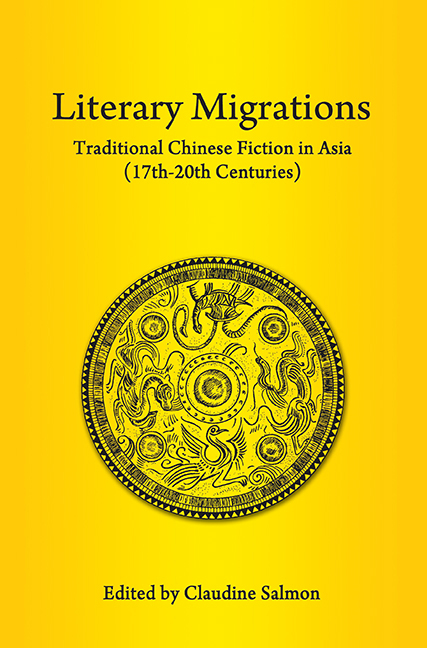Book contents
- Frontmatter
- Contents
- FOREWORD
- Dr Salmon as I Know her
- Preface to Reprint Edition
- Acknowledgements
- INTRODUCTION
- PART I KOREA AND JAPAN
- PART II MAINLAND NORTHEAST ASIA
- PART III MAINLAND SOUTHEAST ASIA
- 7 The Influence of Chinese Fiction on Vietnamese Literature
- 8 Thai Translations of Chinese Literary Works
- 9 Chinese Literary Influence on Cambodia in the Nineteenth and Twentieth Centuries
- PART IV INSULAR SOUTHEAST ASIA
- Bibliography
- Author, story-teller and translator index
- Title index
- List of Plates
- Contributors
- Plate section
7 - The Influence of Chinese Fiction on Vietnamese Literature
from PART III - MAINLAND SOUTHEAST ASIA
Published online by Cambridge University Press: 21 October 2015
- Frontmatter
- Contents
- FOREWORD
- Dr Salmon as I Know her
- Preface to Reprint Edition
- Acknowledgements
- INTRODUCTION
- PART I KOREA AND JAPAN
- PART II MAINLAND NORTHEAST ASIA
- PART III MAINLAND SOUTHEAST ASIA
- 7 The Influence of Chinese Fiction on Vietnamese Literature
- 8 Thai Translations of Chinese Literary Works
- 9 Chinese Literary Influence on Cambodia in the Nineteenth and Twentieth Centuries
- PART IV INSULAR SOUTHEAST ASIA
- Bibliography
- Author, story-teller and translator index
- Title index
- List of Plates
- Contributors
- Plate section
Summary
The fact that Chinese was used for centuries as the written language necessarily made a deep impact on Vietnamese literature, to such an extent that the Chinese and Vietnamese cultures are, in many respects, indistinguishable from each other. Until the invention of the chữ nôm, which marks the first attempt to write down the Vietnamese language, all written literature was in Chinese while Vietnamese was restricted to the oral sphere. This new form of national writing derived from Chinese ideograms was never taken seriously at the court except for brief periods under Hồ Quí Ly at the beginning of the fifteenth century and under Quang Trung in the eighteenth century. Moreover, this form of writing could never really satisfy the aspirations of those who wished to do away with the dichotomy between written and oral language since, in order to be able to use the chữ nôm, it was practically necessary to know Chinese. Nonetheless, this new form of writing was undeniably well-received by some members of the lettered classes who used it to write poems as well as verse novels that were often inspired by Chinese literature. These two forms of writing, which remained essentially the preserve of scholars, gradually came to be replaced by the quốc ngữ which owed its emergence in the nineteenth century solely to France's active military intervention in Vietnam. Quốc ngữ did not emerge without provoking the fierce resistance of Vietnamese patriots opposed to their country's occupation. The year 1865 saw the appearance of the first journal in quốc ngữ, the Gia Ðịnh Báo, a monthly published at the initiative of the occupiers while 1919 brought an end to the mandarinal system of examinations in Sino-Vietnamese and saw the French take control of the educational system.
We shall consider the influence of Chinese Romanesque literature on Vietnamese literature in Chinese and in Vietnamese written in chữ nôm, then in romanized script, laying special stress on this last case since it is characterized by a movement for the translation of Chinese novels, all the more noteworthy as the purpose of the French in substituting romanized script for Chinese characters was essentially to cut the Vietnamese off from Chinese culture.
- Type
- Chapter
- Information
- Literary MigrationsTraditional Chinese Fiction in Asia (17th–20th Centuries), pp. 163 - 195Publisher: ISEAS–Yusof Ishak InstitutePrint publication year: 2013



